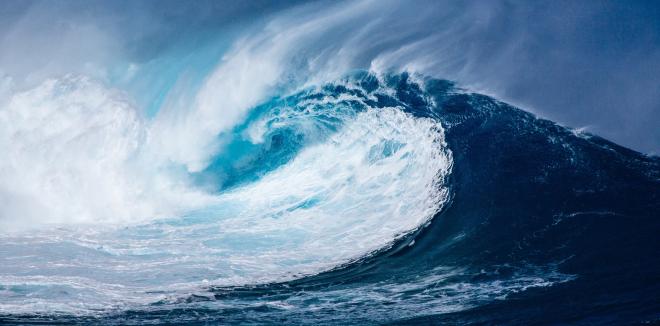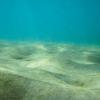New Zealand 2100: The future through high-resolution wave modelling
The Problem:
How climate change will affect New Zealand’s coastline until the end of the century is virtually unknown.The Solution:
Use NeSI’s Mahuika supercomputer to produce comprehensive ensemble of modelled wave projections around New Zealand’s coastlines, with high temporal and spatial resolution at three key sites.The Outcome:
A wave climate database that can be used to improve our understanding of beach erosion, coastal vulnerability and provide information for wave energy technology, as well as future wave projection scenarios that provide crucial information for coastal management and future hazards mitigation.
New Zealand is a nation of islands bounded on one side by the Pacific Ocean and on the other, the Tasman Sea.
Coastline plays an integral role in our country’s industries, its lifestyle and its traditions. But as the climate and weather changes over time, so too can the coastline that defines New Zealand. The dynamics of coastline change present a range of benefits and problems to the country, from beach erosion or accretion, to the destruction of nearshore structures due to wave attack.
João Albuquerque is a PhD student at the University of Auckland studying wave climatology. There, he has created a model that describes the past of New Zealand’s offshore and nearshore waves and a predictive model of how they may change until the end of the century.
His work is part of a larger project, overseen by Dr. Giovanni Coco, combining wave models with beach morphodynamic models and storm surges to understand how these environmental changes will affect New Zealand’s coasts.
“I am generating off-shore and near-shore wave information for the whole of NZ. This information can be used for a range of different studies in shoreline morphodynamics, beach erosion, or assessing the impacts of building near-shore or off-shore structures,” said João.
The first part of João’s project took wave data from the past 20 years and collated it into a model of New Zealand’s coasts. By processing this data on NeSI supercomputers, João was able to create a predictive model of how New Zealand’s wave patterns would change over the next 80 years, based on three global climate models and two changing climate scenarios.
“There are global climate models that simulate the future climate based on different greenhouse gas scenarios. Based on the atmospheric changes these models are projecting, there are global wave models. I’m bringing these waves from off-shore to near-shore. From that, we can have an idea of whether these waves will increase or reduce in size.”
The model provides wave parameters for all the coastline around New Zealand, however, it also has high-resolution data at three sites: Raglan, Tairua, and Tauranga. Here, João simulated waves in high resolution grids of one kilometre. To do this, João needed processing power.
“I have around 20 Terabytes of data. It’s a lot of data and an extensive computational effort to calculate this wave propagation under different conditions. I’m lucky to have access to a cluster like NeSI’s. Without it, I’d be running this model for years, rather than about a month.”
Even with NeSI’s computational power, João had a unique problem to solve.
João had 20 years of existing wave data plus 18 different 20-year wave scenarios from global climate models he wanted to propagate into his model under different spatial resolutions.
By breaking the 20-year data into six-month chunks and running them in parallel, he could significantly cut down his processing time. However, each high-resolution data chunk was dependent on the information from a previous, lower resolution one. To overcome this, João timed his data sets in a cascade, as one finished another began. With advice from NeSI's Support team, João switched to job arrays to manage this task, increasing his run efficiency.
“There was also a limit to the number of cores I could use while running these simulations. The benefits would begin to decline once I exceeded 26 cores. To overcome this limitation, I broke the simulation into 40 smaller simulations running in parallel, so I could use all the available cores.”
João’s wave model will be incorporated into a larger model of New Zealand’s coasts to inform coastal hazards and environmental development. But it’s already being used by another project at the Energy Research Group at University of Waikato. There, Danielle Bertram is using João’s wave models to investigate wave energy as a renewable power source in New Zealand.
“A lot of models don’t produce energy period as one parameter. That’s why João’s tool is so important for my research,” said Danielle. "That parameter lets us work out the electrical output of a wave energy device at a specific location.
“João’s model is the most useful thing in my industry, so I can imagine the implications it will have across the ocean and wave space.”
As an island nation, it is vital to understand how New Zealand's coasts have changed and will continue to change in the future. Without NeSI supercomputer data storage, processing, and support, high-resolution wave modelling like João’s would not be possible. With it, we can catch a glimpse at how the changing world climate will affect this economic resource and important part of New Zealand’s environment.
Interested in learning how NeSI’s Computational Science Team can help you? Or have an example of NeSI supporting your work that we can profile as a case study? Get in touch by emailing support@nesi.org.nz.







